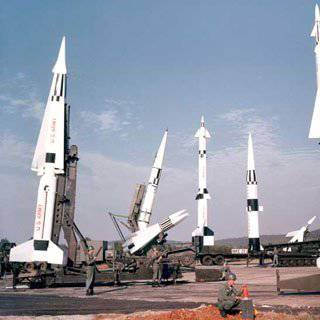Why is the United States losing more on a missile defense deal with Russia (US CBSNEWS)
 US and Russian Strategic Nuclear Data Exchange Results weaponsrequired under the New Start Agreement (START) were issued by the US Department of State on June 1. They convincingly demonstrate the truth of what skeptics have been talking about for months: the agreement has brought nothing to the United States in terms of reducing the number of forces on the Russian side.
US and Russian Strategic Nuclear Data Exchange Results weaponsrequired under the New Start Agreement (START) were issued by the US Department of State on June 1. They convincingly demonstrate the truth of what skeptics have been talking about for months: the agreement has brought nothing to the United States in terms of reducing the number of forces on the Russian side.When advancing the agreement to the Senate and the American people, the Obama administration argued that the New Start would greatly benefit from reducing the US and Russian strategic nuclear warheads by 30 percent - from the current 2 200 to 1 550 warheads on each side. It will also set the maximum number of deployed US and Russian strategic launchers (missiles and bombers) to 700 on each side. Both parties are required by agreement to be at or below the ceiling by 2018. The benefit here will be obtained by Moscow and this is now an indisputable fact. In fact, only the United States must make reductions in accordance with the new treaty.
As of February 5, the day the treaty entered into force, Russia was already below the limits provided by the treaty, such as the number of deployed strategic nuclear launchers and warheads. On the first day of the contract, the number of Russian launchers was 521, which is significantly below the scope of the new START treaty, where the limit in 700 units was set, and the number of accountable warheads was 1537 units, which is below the new ceiling in 1550 units. Instead of reducing its armed forces, Moscow would create them to reach the ceiling of new restrictions.
In fact, according to the statement of the Minister of Defense of Russia Anatoly Serdyukov, Russia will make every effort to build up to the 2028 year the maximum number of strategic carriers as per the agreement. Unlike Russia, the United States will have to make cuts, including the 25 percentage reduction of deployed strategic carriers.
The senior members of the Obama administration denied this uncomfortable truth for months, leading the Senate to ratify the New Start in December of 2010. To recognize that the level of Russian forces is already below the new restrictions of the New Start, meant to recognize that the United States has become the only party that is required to make arms reductions, and this will raise questions about the value of the agreement. This would contradict the popular claim that the “New Start” would require 30-percent cuts from both sides.
In fact, not much work was needed to conclude that the Russians did not give up anything. Numerous Russian officials and commentators spoke openly before the treaty was ratified that Russia is already below the New Start limit and will decrease further, as it will decommission strategic cold-war nuclear systems. Russia has been in a position to replace its old systems with newer models for some time, and the rate of replacement cannot keep up with the decontamination of its outdated systems — thus, Russia's strength would have decreased with or without the New Start. So Russian officials gladly noted that only the United States would have to make cuts.
Secretary Clinton denied this, now an obvious fact to the Senate Committee on Armed Forces and stated that American skeptics of the agreement making such statements “simply do not believe in arms control agreements in general, and in my view, unfortunately, distort much from what they are told. ” Similarly, when retired Senator Keith Bond, then Vice-Chairman of the Senate Intelligence Committee, remarked that only the United States would have to make reductions in accordance with the new treaty, the State Department publicly denied his statement, saying: "The agreement did not forcing the United States to make reductions unilaterally. "
Negotiations are always a compromise - and you have to give something to get something, right? Apparently not, when it came to the cuts required by the New Start. As Russian expert Vladimir Dvorkin openly admitted, “Russia should not cut anything. Only the US will have to reduce its arsenal. " Earlier, he and a Russian official, Alexei Arbatov, noted: “The United States does not seek to eliminate, reduce or limit any weapons of the other side or a program in particular (such as, for example, Soviet or Russian heavy ICBMs (intercontinental ballistic missiles) or mobile missiles that were the center of negotiations in previous times). ” “No, really. There is a lesson here that should not be forgotten when skeptics' claims to achieve arms control by governments need to be taken into account. As Ronald Reagan said, “Trust, but verify.”
Biography: Keith B. Payne - Head of the Department of Defense and Strategic Studies at Missouri State University (Washington, DC). The opinions expressed in this article are solely the views of the author.
Information